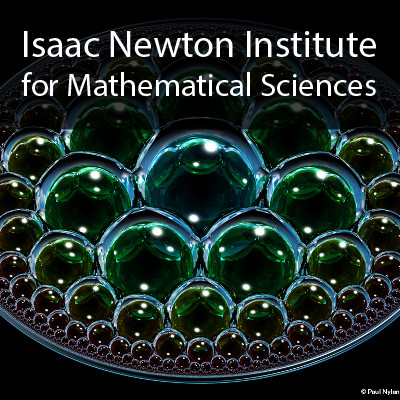Rothschild Lecture: Thomson's 5 point problem
54 mins 19 secs,
99.38 MB,
MP3
44100 Hz,
249.8 kbits/sec
Share this media item:
Embed this media item:
Embed this media item:
About this item

| Description: |
Schwartz, R (Brown University)
Friday 7th April 2017 - 16:00 to 17:00 |
|---|
| Created: | 2017-04-13 17:57 |
|---|---|
| Collection: | Non-Positive Curvature Group Actions and Cohomology |
| Publisher: | Isaac Newton Institute |
| Copyright: | Schwartz, R |
| Language: | eng (English) |
| Distribution: |
World
|
| Explicit content: | No |
| Aspect Ratio: | 16:9 |
| Screencast: | No |
| Bumper: | UCS Default |
| Trailer: | UCS Default |
| Abstract: | Thomson's problem, which in a sense goes back to J.J. Thomson's 1904 paper, asks how N points will arrange themselves on the sphere (or the circle, or some other space) so as to minimize their total electrostatic potential. Mathematicians and physicists have also considered this problem with respect to other potentials, such as power law potentials. For special values of N, and the sphere of the appropriate dimension, there are spectacular answers which say that the potential minimizers are highly symmetric objects, such as the regular icosahedron or the E8 cell. In spite of this work, very little has been proved about 5 points on the 2-sphere. In my talk I will explain my computer assisted but rigorous proof that there is a phase transition constant S=15.048... such that the triangular bi-pyramid is the minimizer with respect to a power-law potential if and only if the exponent is less or equal to S. (This constant was conjectured to exist in 1977 by Melnyk-Knop-Smith.) The talk will have some colorful computer demos.
|
|---|---|
Available Formats
| Format | Quality | Bitrate | Size | |||
|---|---|---|---|---|---|---|
| MPEG-4 Video | 640x360 | 1.93 Mbits/sec | 787.71 MB | View | Download | |
| WebM | 640x360 | 638.9 kbits/sec | 254.02 MB | View | Download | |
| iPod Video | 480x270 | 521.55 kbits/sec | 207.30 MB | View | Download | |
| MP3 * | 44100 Hz | 249.8 kbits/sec | 99.38 MB | Listen | Download | |
| Auto | (Allows browser to choose a format it supports) | |||||

